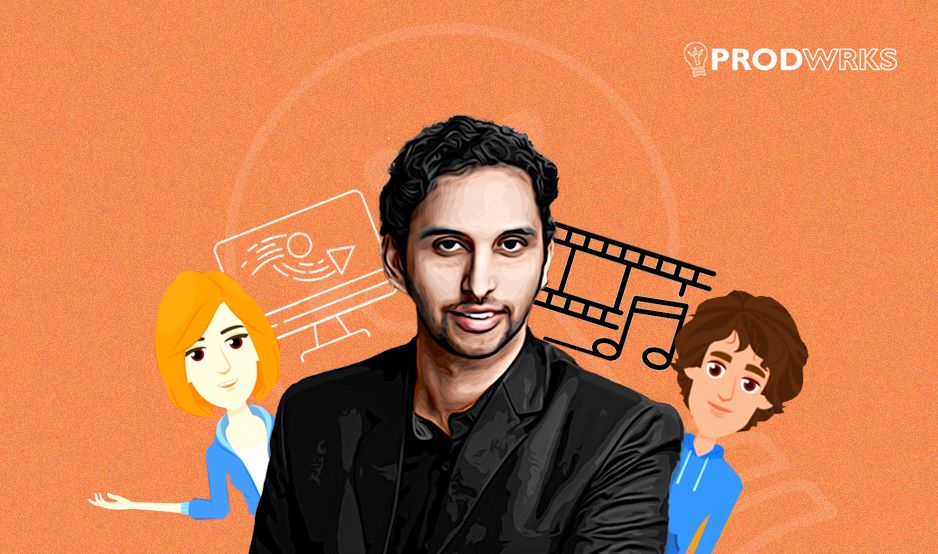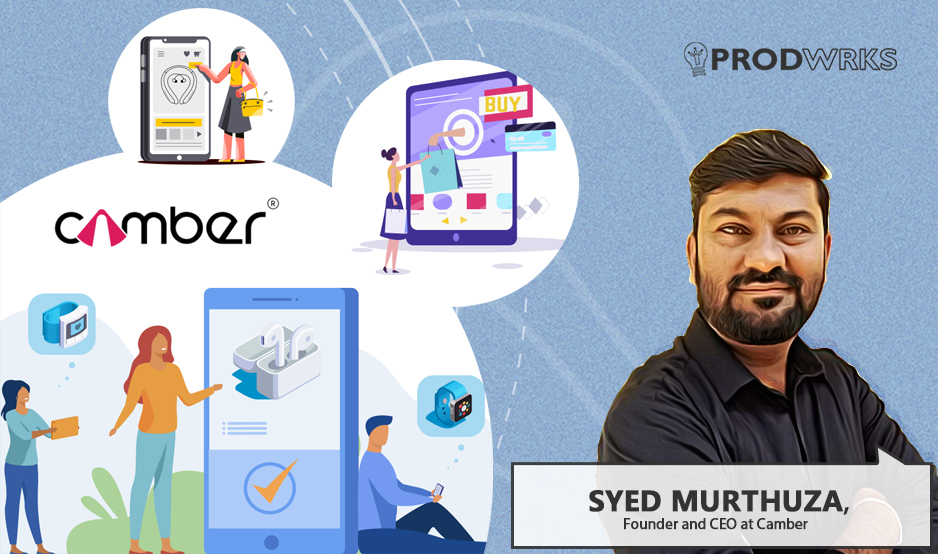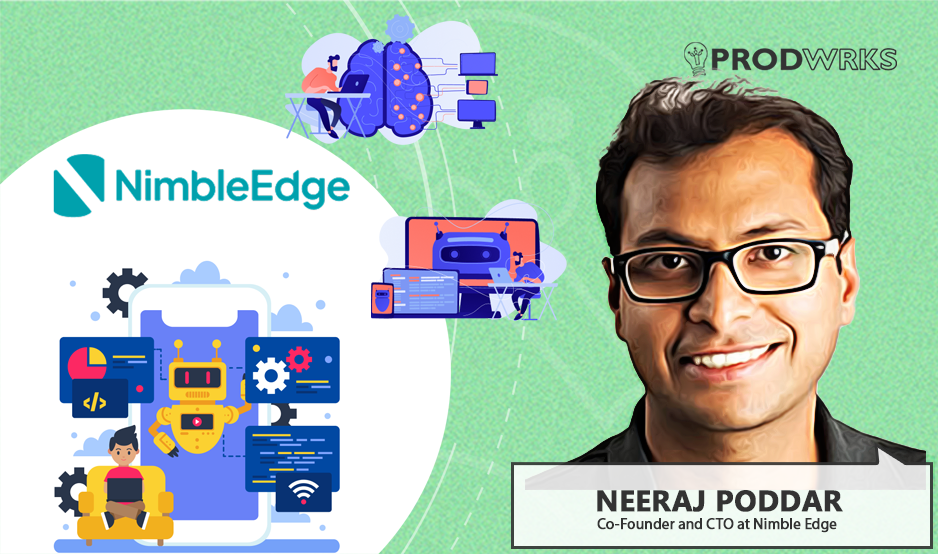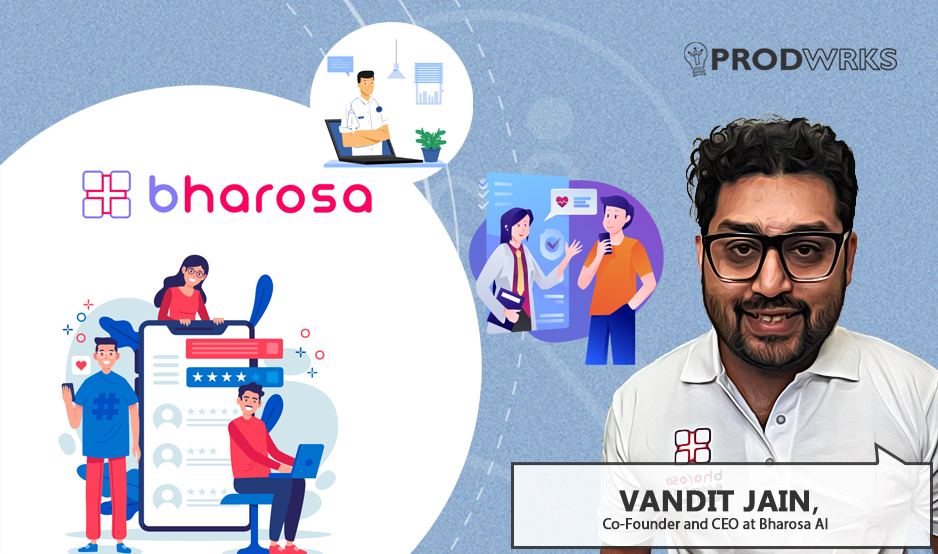
Enter Animaker, a game-changing DIY content creation platform that combines user-centric design and emerging technologies like NLPs and Generative AI to empower individuals and businesses to effortlessly create captivating animations, videos, and audio.
Founded by Raghavan RS in 2014, Animaker is revolutionizing video making and challenging the status quo of established players like Adobe and Canva. In this feature story about Animaker, we delve into Raghavan’s product development approach and get insights into the future of video creation.
The Birth of Animaker
Animaker was born out of Raghavan’s frustration with the traditional video-making processes. Before starting Animaker in 2014, he used to run a successful video production company and experienced challenges posed by the existing video editing tools that followed the same “quarter-century-old video-making process.”
“Designers struggled to learn and use professional tools to deliver quality videos. Though other software tools gave better user experience, there were a lot of missing pieces, and needed fixing,” says Raghavan.
This was a time when the demand for videos and video consumption was skyrocketing, and with this, challenges such as the availability of pro-designers, cost factor, and time constraints became high while building visual creatives. This was the make-or-break situation which prompted Raghavan to launch Animaker.
"My team and I built Animaker and broke the barrier of the video creation process. From day one, we had product-market-fit because the underlying problem we solved with Animaker resonated well in the market."
Talking about funding, Raghavan said, “Our previous successful company Bode Animation funded Animaker. So in that way, we are lucky to start. If your unit economics, especially cash flow, is well projected, you can get out of any tough situations in the initial days.”
Enhancing User-Adoption and Retention
To gain initial traction with users, the Animaker team decided to do away with an MVP and plunged head-first into launching a full-scale product in the market. The reason was simple.
"We never believed in MVP in the initial days because of the complexity involved in the video creation process. Until you create something 10x better than the current competition, nobody will care about what you develop. So, we prioritized the most important features that deliver the job, and at the same time, competitors think that it is impossible," Raghavan explains.
He also has another unique way to enhance user adoption and retention.
“We always limit our free vs premium subscriptions/accounts based on usage, not based on features, so users can consume the value better and make decisions easier.”
By allowing users to consume the full value of the platform, Animaker simplifies decision-making and encourages continued engagement. This user-friendly approach has contributed to their success in attracting and retaining a diverse range of users, from beginners to advanced video creators.
User-Driven Innovation
Customer feedback plays a pivotal role in shaping Animaker’s product decisions. Animaker was founded on the principle of solving user problems and continues to prioritize and listen to customers first.
Raghavan says, “Seventy percent of our current sprint plans include customer feedback. Our customer community is very active. In fact, almost all our products, like Picmaker, getshow.io, and Vmaker, were born out of customer feedback.”
Raghavan believes that for creative platforms like Animaker, it is essential to prioritize features according to users’ expertise and experience level. This is the most difficult and important part of product development.
"The critical question any product development team needs to answer is what type of persona you are targeting. For beginner users, this is a bit easy as you know Animaker is in a DIY segment. However, for advanced users, especially while updating or introducing new features, we make sure to keep our goal clear - this is to help create videos for business purposes."
Raghavan finds it very important to ideate on feature prioritization with product teams at the beginning of development to give clarity on what is needed. He says, “This helps set a segment, a time frame, and within that period, we create sub-segments and train users.”
Overcoming Challenges and Embracing Growth
Animaker has faced its fair share of challenges during its journey. The two major struggles were transitioning from Flash to HTML5 and expanding from a single product to a multi-product lineup.
Raghavan advises product founders who are scaling to make careful decisions, select the right technologies and treat each new product as a fresh startup.
"The only skill you acquire in developing your first product is confidence. Moving on from here and expanding to a multi-product lineup, you should treat every new product as a new startup and do all the basic things right."
Talking about moving from Flash to HTML5, Raghavan says, “It was a very challenging decision to design your architecture, especially on top of new trending technology because most of the time they are not future-proof. But luckily, we picked the right tech stack in the early days, which saved a lot of time later.”
Staying Ahead in a Competitive Landscape
In a rapidly evolving market, Animaker and its product offerings compete directly with industry giants like Adobe, Canva, and other established players. For instance, Picmaker competes with Canva, Sproutsocial and Hootsuite. Getshow.io competes with Intercom and Mailchimp.
“Animaker’s Picmaker is the world’s first vertically aligned product for social media marketers that includes all new trends of Social Media design and marketing. Getshow is the first tool to include customer data, video data and product data, all in one place to run email and video campaigns.”
Rahavan's product philosophy of consistently designing products for the future has helped it keep pace and even stay ahead of giants in this industry. He says, "We are a design-first company. We always start our work by designing without thinking if it is possible to develop or not. I think we will stay the same way even when we start now."
“We don’t have the habit of chasing new technology and trying to build products around it. We do the reverse. We pick the most impossible problem and try to solve using the emerging technology out there in the best way possible,” he adds.
Video is the Future
Raghavan strongly believes that “‘video creation is the future”, and the only way to build for the future is by placing their customer’s success metrics as their north star metrics.
"We always treat video creation and distribution of users as the top metrics. We segment users and set different benchmarks of metrics to move them toward success. For example, for our product getshow.io, we help companies to run email campaigns with videos. We take the number of campaigns our customers run and their success."
Jobs in video creation are already amongst the highest-paying in the content creation industry. Raghavan says that the industry is changing rapidly owing to the proliferation of natural language programs (NLPs) and Generative AI.
“The market is changing so fast, especially because of Generative AI. Animaker, with the launch of Steve AI is well-positioned to grow in this trend. I think the future is not for AI or humans, but more favorable for humans who use AI.”
Keeping pace with the developments in AI, Animaker is also launching or already launched a slew of AI-enabled tools for content creation.
Animaker’s audio-to-video AI engine operates on top of Steve AI, poised to be a big deal for podcast creators and music artists. Picmaker’s new Social box – One Inbox for customer communication, helps content creators to interact with followers and turn them into fans using the power of AI and visuals. To top it all, Animaker’s Vmaker is launching AI Video Editor to reduce editing time from hours to minutes!
Future Forward
Raghavan says that emerging technology may not completely change anything in our market, but the positive outcomes of it will. Improvement in vision computing will impact the research of computer vision and the speed it solves the problem.
"Currently, there are 10+ new AI trends, and we also have patents for a few. But the biggest challenge is deploying it as a usable solution, especially with cost and time efficiency - this will be the biggest trend or research shaping this industry," he states.
However, he feels that companies similar to Animaker’s size must focus not just on trends but also prioritization – How to take multiple stakeholder conversations in building new features but still maintain the least time to hit the market.
"Especially with a hybrid version of customer-centric, design-first, sales-led and product-led vision or process. We call this the PC-DS initiative internally. Initially, you can be successful with one of these strategies, but when you grow, you need to strengthen all of it."
Animaker’s journey from a personal frustration to a market-disrupting force is a testament to the power of innovative thinking, customer-centricity, and a design-first approach. By breaking barriers, embracing emerging technologies, and putting the user at the center of their development process, Animaker has redefined video creation.
As they continue to evolve, Animaker is set to shape the future of video creation and empower individuals and businesses to unleash their creativity through captivating videos.



